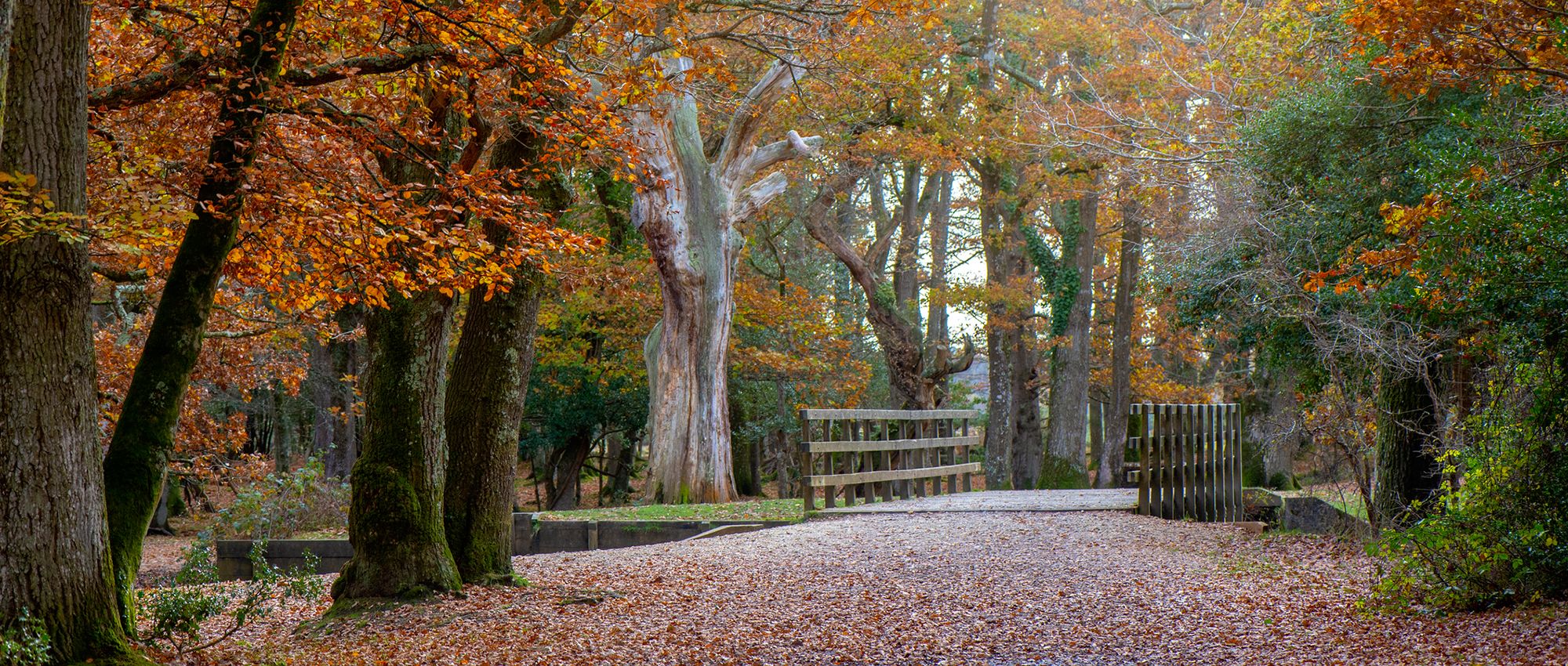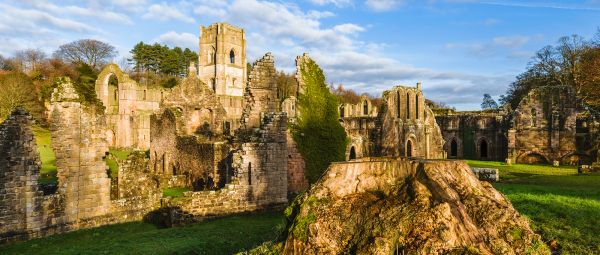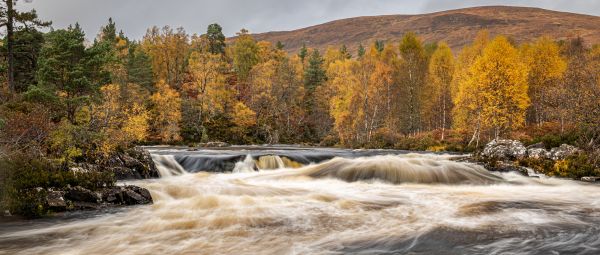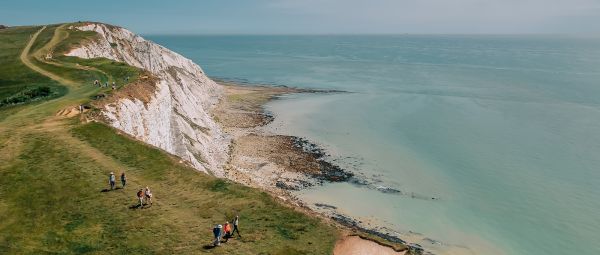The ultimate guide to autumn woodland walks
Autumn is an amazing time to enjoy woodland walks

Autumn is amazing. Pick the right day and there’s no better season. You’ll see trees glowing red-gold and bushes popping with berries. You’ll kick with delight through fallen acorns, shiny conkers and crunchy leaves. You’ll see atmospheric mists hanging in the valleys and crisp, low light causing everything to glow.
Here’s all you need to know for the best autumn amble…
When to walk?
Autumn colour can be unpredictable. Shortening days and cooling nights prompt it. But the exact timing and intensity is determined by the year’s weather.
Below-average rainfall in spring and summer can cause leaves to turn earlier than usual. An unusually warm, dry start to autumn can push the colour-change back later in the season. A storm or severe frost can spoil the fall festival altogether.
Leaves will begin to change colour in northern regions first. Peak fall colour is usually early October in Scotland, but mid/late October further south. It depends on the trees though. Non-native trees generally change before indigenous species.
What to consider?
The weather can change quickly in autumn. Wear layers, take waterproof gear and be prepared for muddy terrain. Walking poles will help steady you on slippy ground.
Days are shortening. You might begin losing the light by 5pm. Plan to finish well before then. And pack a torch.
Autumn is prime foraging season. But, if you do harvest any wild food, leave plenty behind for the wildlife. And only pick mushrooms if you’re a fungi expert.
Where to start?
The Woodland Trust looks after over 1,000 woods UK-wide. All of these are free to visit and open year-round. Many are laced with networks of trails of various levels. Also look for sites run by Forestry England, Natural Resources Wales and Forest and Land Scotland.
Arboretums planted with exotic species are especially spectacular. Look for footpaths that run amid sugar maples, dogwoods and quaking aspens.
What to look for?
When walking in the woods, look for mushrooms, horse chestnuts and hoarding squirrels. Walk via hedgerows bursting with blackberries, elderberries, rosehips and sloes. Stroll by lakes and rivers for atmospheric autumnal mists. Stroll through deer parks (where safe) and listen for rutting stags. And keep an eye on the skies. You might see flocks of cuckoos and swallows departing for warmer climes or redwings, waxwings and geese arriving for winter.
Routes
Savernake Forest, Wiltshire
Savernake, one of the oldest wooded areas in England, has some extremely elderly trees. Some even have names, such as Old Paunchy, the White Road Oak and the two Saddle Oaks, with their near-horizontal boughs.
The trails aren’t waymarked here. However, a 6-mile circuit, starting by the Bumble Oak, will introduce you to the finest local specimens. That includes the resplendent beech-lined Grand Avenue and the Big Belly Oak, one of the oldest oaks in Britain.
New Forest, Hampshire
The New Forest has the highest concentration of ancient woodlands in Western Europe. And in autumn those trees put on quite the performance. Hiking possibilities are endless. Try a 6-mile loop through Denny Wood. Here, you’ll find both ornamental trees and ancient beech and oaks in their finest fall colours. You’ll get views across White Moor, cloaked in purple heather. You might also hear fallow, roe and sika stags bellowing and battling for a mate.
Fountains Abbey, Yorkshire
Autumn colour can augment already impressive sites, providing an extra wow-factor. Such is the case at Fountains Abbey. A wonderful 5-mile walk at this National Trust estate offers a bit of everything. Blazing horse chestnuts and beech trees flank the 12th-century ruins. Exotic maples and swamp cypresses are afire in the formal gardens. The apple orchard is heavy with fruit.
From the Visitor Centre, head towards the abbey. Then stroll through woods to the River Skell and cross the deer park, where the residents may be rutting. Return via Studley Park, admiring the fall colours reflected in the ponds.

Brechfa Forest, Carmarthenshire
Forests have cloaked the sides of the Cothi valley for centuries, although their use and nature has evolved over time. These days Brechfa is run by Natural Resources Wales and is spidered with varied walking trails.
The 1-mile Riverside Walk offers lovely views of fall colours alongside the gurgling Gorlech. The more strenuous 5.5-mile Forest Garden Walk showcases the forest’s breadth of trees, including Californian giant redwoods and South American nothofagus.
Cwm Rheidol, Ceredigion
The steeply sloping valley of Cwm Rheidol looks like something from a fairytale. Ancient forest fluffs the slopes, hiding mossy undergrowth, lichen-scabbed rocks and a trickling river. In autumn, with the leaves glowing gold, it’s even more magical.
A challenging 7-mile circular route drops into Cwm Rheidol. Start from the village of Devil’s Bridge, where three bridges (the oldest dating from around 1188) span a narrow ravine. Then dip into the valley to hair-pin among the gnarled old trees.
Glen Finglas, Loch Lomond & The Trossachs National Park
You could probably spend all autumn walking across the enormous Glen Finglas estate. There are nine waymarked trails here, the longest of which is 15 miles. These variously wind though Glen Finglas and the surrounding valleys, along the slopes of Stuc Odhar and to Loch Venachar.
The glens used to be blanketed with alder, birch, oak, hazel, rowan and willow. Now, veteran trees stand alone within colourful heathland and pasture, while one million native trees have been replanted. Look out for red deer grazing the uplands, red squirrels foraging for nuts and golden eagles cruising the thermals above. For the ultimate adventure, hike the Great Trossachs Path, a 30-mile trail right across the Great Trossachs Forest.
Glen Affric, Highlands
Wild Glen Affric is gorgeous year-round. But autumn is extra special. The hillsides here are cloaked in a mix of moody moorland, old native trees and soaring Scots pines. This creates a green-orange-gold patchwork that reflects in the still, blue lochs. A Highlands masterpiece. It can be noisy though, with the bellows of rutting deer and the roar of waterfalls.
Make a 10-mile circuit from the River Affric car park. This varied walk will showcase everything from remnants of ancient Caledonian forest to looming summits, possibly capped with snow.

Explore more
We’ve got ideas for hundreds of wonderful walking routes across England, Scotland and Wales, long and short, easy and challenging. Search for routes on our website. Or join a guided walk with a local Ramblers group. Find your nearest Ramblers group and choose a walk that suits your pace, fitness and interests.
All images © Getty

10 great British pub walks
Work up an appetite and a thirst with these gentle walks visiting some of Britain’s most memorable pubs.

7 fantastic sections of the England Coast Path you can already enjoy
Castles, cliffs, seals and seabirds: discover the highlights of England’s landmark coastal trail on seven stretches already open for walkers.

Planning a walking route
Choosing the location and distance are just two important aspects of planning a walking route. Here is our guide to a well-planned walk.

Campaign with us
We campaign to remove barriers to walking and we step up to protect the places we love to wander.